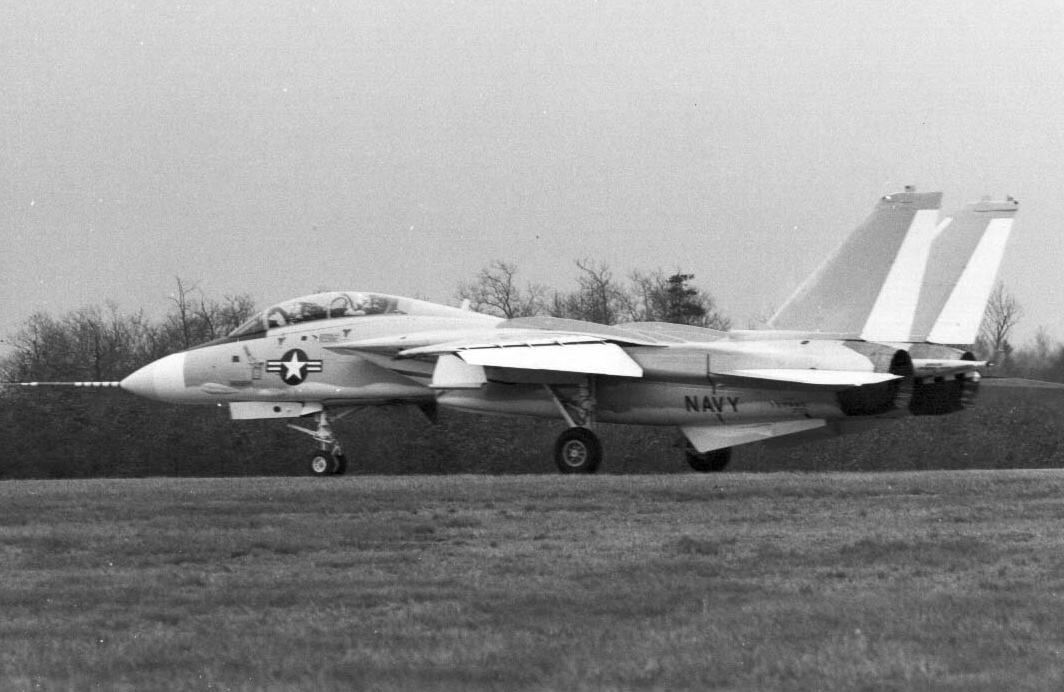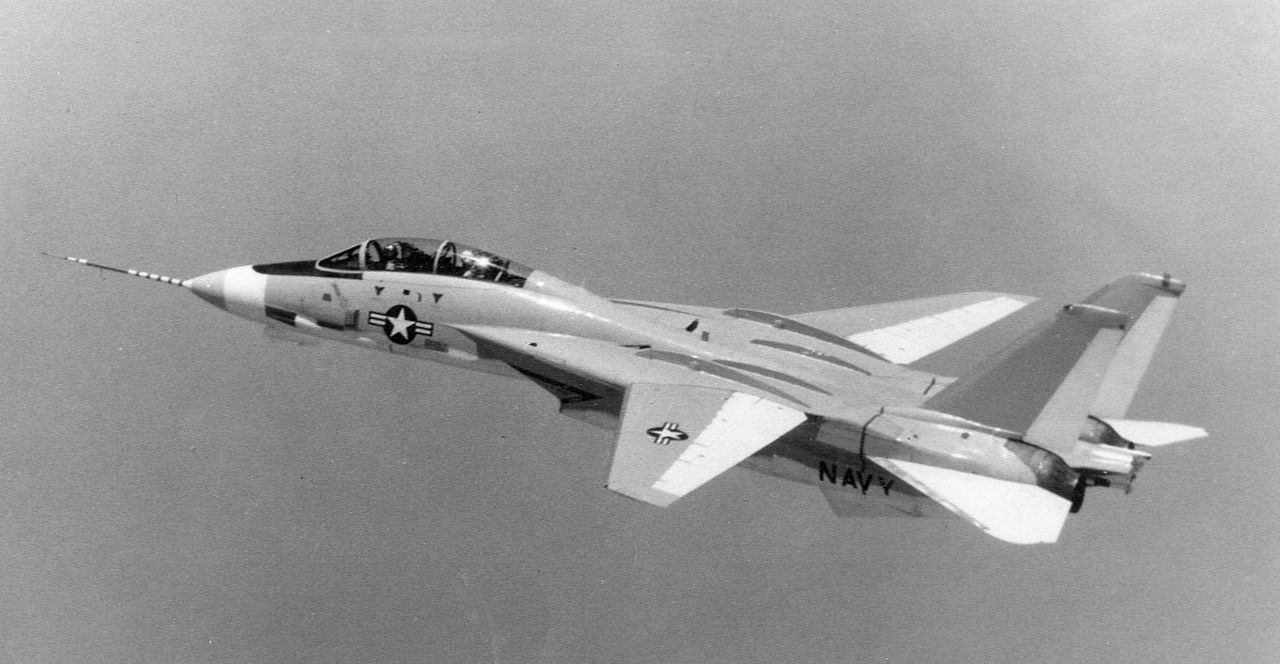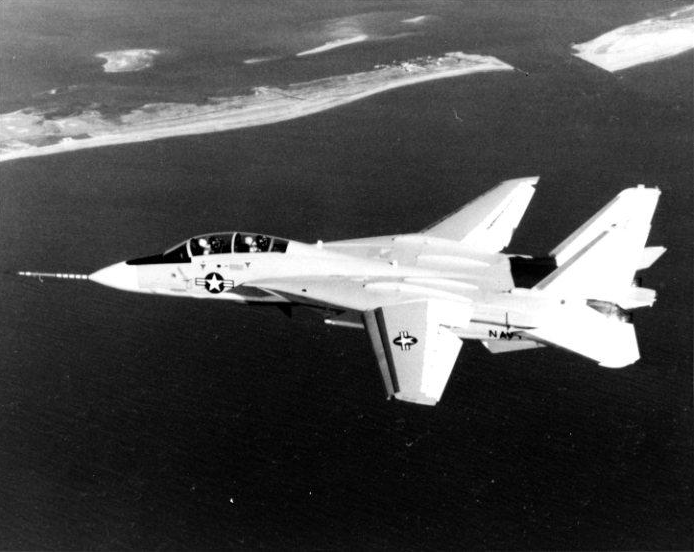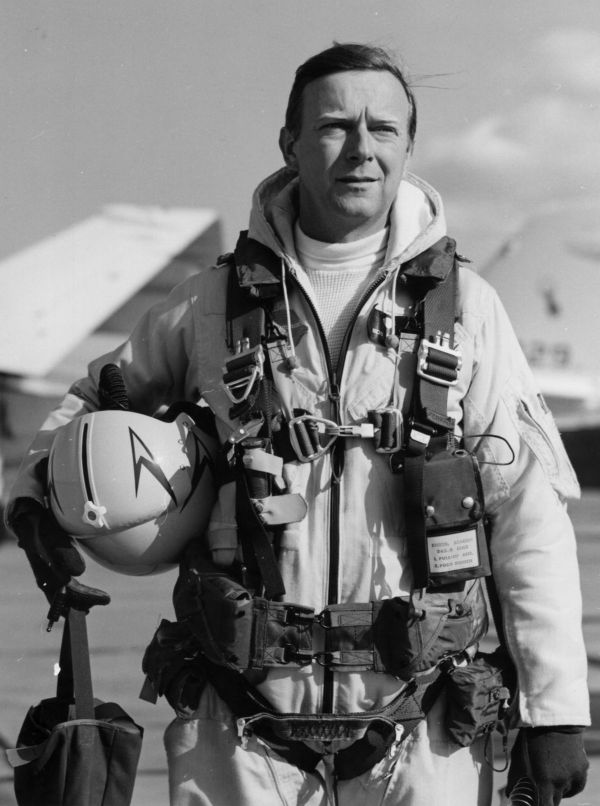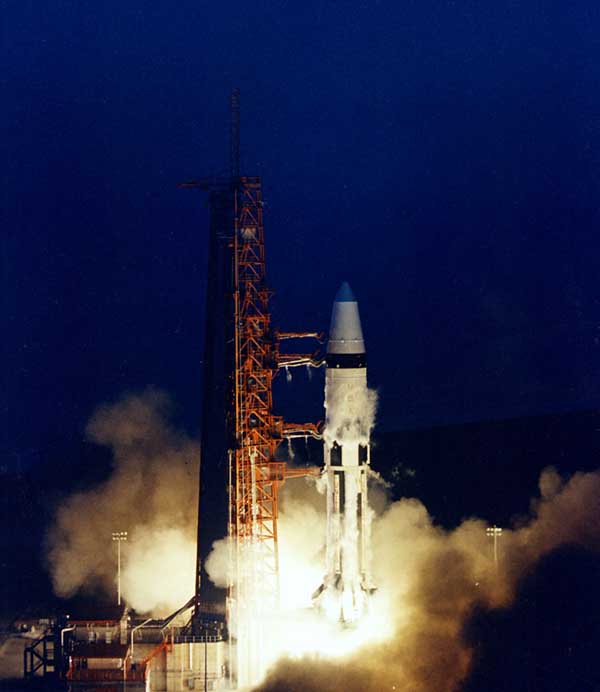
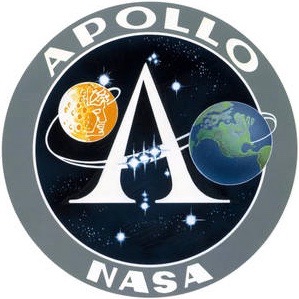 22 January 1968: At 22:48:00.86 UTC (5:48:08 a.m., Eastern Standard Time) a Saturn IB rocket lifted off from Launch Complex 37B at the Cape Kennedy Air Force Station, Cape Kennedy, Florida, carrying LM-1, an unmanned Apollo Program lunar lander, into a low-Earth orbit.
22 January 1968: At 22:48:00.86 UTC (5:48:08 a.m., Eastern Standard Time) a Saturn IB rocket lifted off from Launch Complex 37B at the Cape Kennedy Air Force Station, Cape Kennedy, Florida, carrying LM-1, an unmanned Apollo Program lunar lander, into a low-Earth orbit.
AS-204 reached Mach 1 at T + 0:59.8, passing 24,574 feet (7,490.16 meters). First stage separation occurred at T + 02:23.6, at an altitude of 194,228 feet (59,201 meters), with the vehicle accelerating through 7,563 feet per second (2,305 meters per second).
The AS-204 S-IVB engine cut off occurred at T + 09:53 at 536,166 feet (163,423 meters) with the vehicle travelling 25,659 feet per second (7,820 meters per second). Orbital insertion occurred at T + 00:10:03 at an altitude of 88 nautical miles (163 kilometers) with a velocity of 25,684 feet per second (7,828 meters per second). The orbit was elliptical with an apogee of 120 nautical miles (222 kilometers) and perigee of 88 nautical miles (163 kilometers). The orbital period was 88.39 minutes.
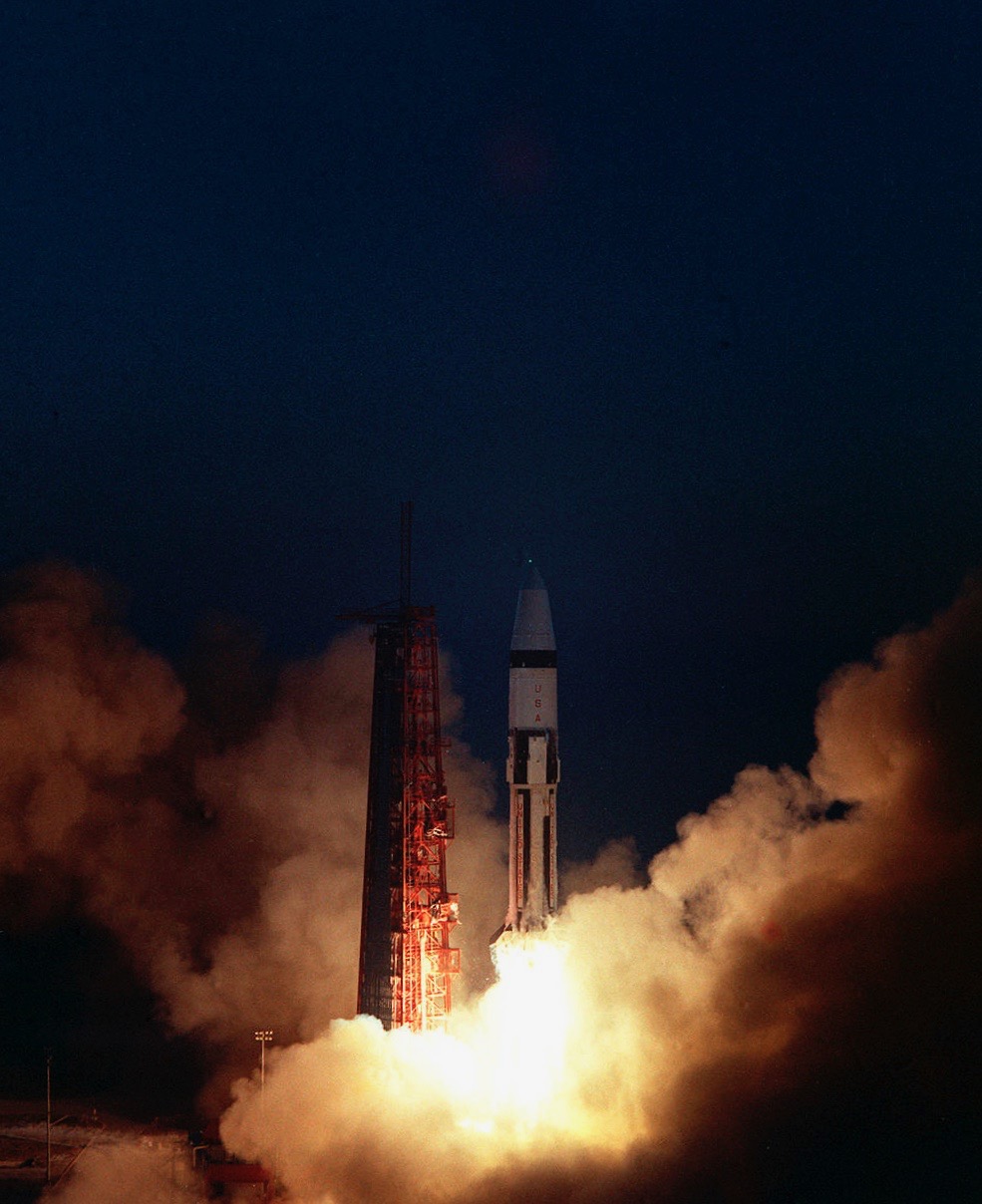
The Lunar Module separated from the S-IVB stage at T + 00:53:55.24. It was the allowed to cold-soak for about 3 hours. At T + 03:59.46, the LM’s descent engine was fired but aborted by the guidance computer after 4.0 seconds. A little over 3 hours later, at T + 06:10:42, the descent engine was fired a second time, and burned until T + 06:13:14.7.
The ascent engine fired at 06:12:14.7 while the descent and ascent stages were still joined. The engine burned 60.0 seconds. It was fired a second time at T + 07:44:13.
With the tests completed, the orbits of the separated LM stages were allowed to decay. LM-1 quickly re-entered Earth’s atmosphere and was destroyed.
The purpose of the Apollo 5 mission was to test the Grumman-built Lunar Module in actual spaceflight conditions. Engines for both the descent and ascent stages had to be started in space, and be capable of restarts. Although the mission had some difficulties as a result of programming errors, it was successful and a second test flight with LM-2 determined to be unnecessary and was cancelled.
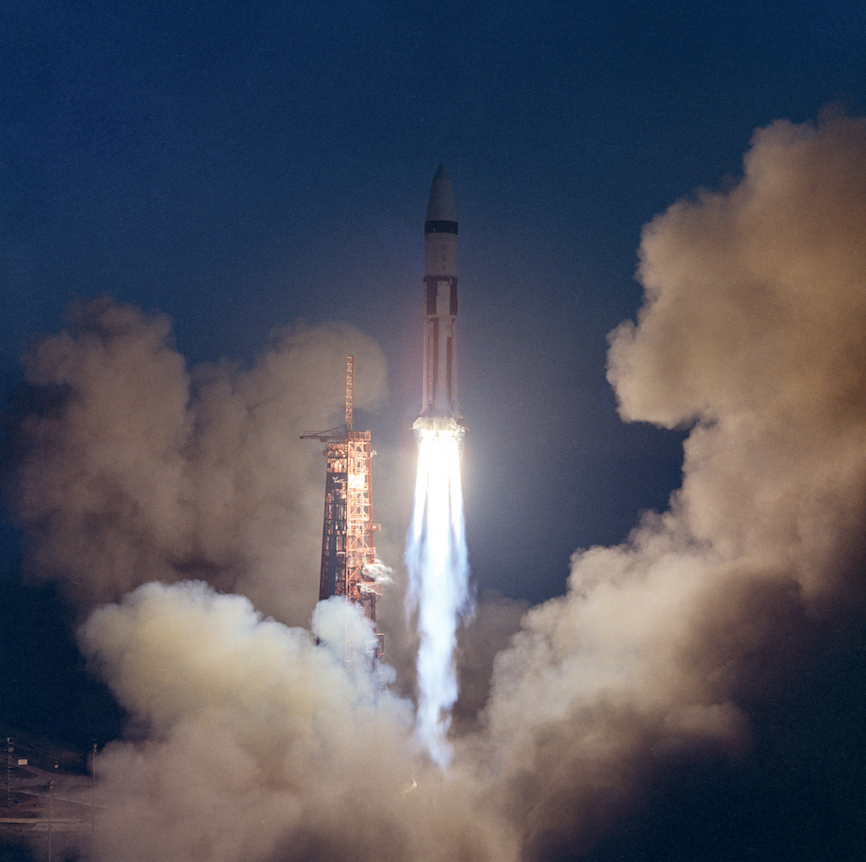
SA-204 ¹ had originally been the scheduled launch vehicle for the Apollo 1 manned orbital flight.
When a fire in the command module killed astronauts Virgil I. (“Gus”) Grissom, Edward H. White and Roger B. Chaffee, 27 January 1967, the rocket was undamaged. It was moved from Launch Complex 39 and reassembled at LC 37B for use as the launch vehicle for Apollo 5.
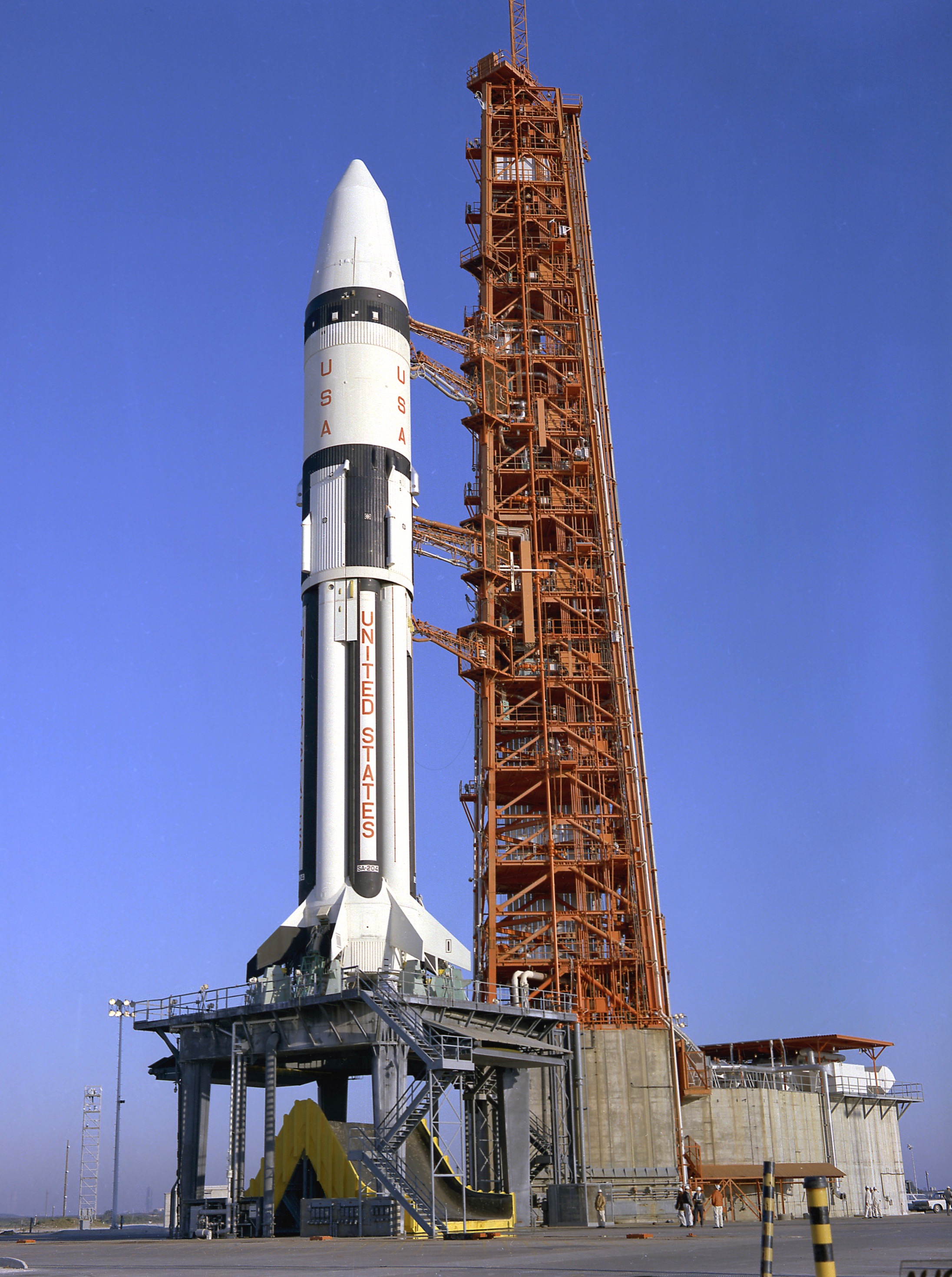
The Saturn IB AS-204 was a two-stage, liquid-fueled, heavy launch vehicle. It consisted of a S-IB first stage and S-IVB second stage. The total height of AS-204 was 181 feet, 0.355 inches (55.17782 meters). The Saturn IB rocket stood 141 feet, 8.644 inches (43.19636 meters), without payload. It had a maximum diameter of 22.8 feet (6.949 meters), and the span across the first stage guide fins was 40.7 feet (12.405 meters). Its empty weight was 159,000 pounds (72,122 kilograms) and at liftoff, Apollo 5 weighed 1,285,044 pounds (582,886 kilograms). The Saturn IB was capable of launching a 46,000 pound (20,865 kilogram) payload to Earth orbit.
 The S-IB first stage was built by the Chrysler Corporation Space Division at the Michoud Assembly Facility near New Orleans, Louisiana. The first stage was 80 feet, 4.089 inches (24.4878606 meters) long, with a maximum diameter of 21 feet, 8.0 inches (6.604 meters) (21 feet, 5.0 inches across the Redstone tanks). The stage was powered by eight Rocketdyne H-1 engines, burning RP-1 and liquid oxygen. Eight Redstone rocket fuel tanks, with four containing the RP-1 fuel, and four filled with liquid oxygen, surrounded a Jupiter rocket fuel tank containing liquid oxygen. Total thrust of the S-IB stage was 1,666,460 pounds (7,417.783 kilonewtons) and it carried sufficient propellant for a maximum 4 minutes, 22.57 seconds of burn. The first stage of AS-204 was S-IB-4.
The S-IB first stage was built by the Chrysler Corporation Space Division at the Michoud Assembly Facility near New Orleans, Louisiana. The first stage was 80 feet, 4.089 inches (24.4878606 meters) long, with a maximum diameter of 21 feet, 8.0 inches (6.604 meters) (21 feet, 5.0 inches across the Redstone tanks). The stage was powered by eight Rocketdyne H-1 engines, burning RP-1 and liquid oxygen. Eight Redstone rocket fuel tanks, with four containing the RP-1 fuel, and four filled with liquid oxygen, surrounded a Jupiter rocket fuel tank containing liquid oxygen. Total thrust of the S-IB stage was 1,666,460 pounds (7,417.783 kilonewtons) and it carried sufficient propellant for a maximum 4 minutes, 22.57 seconds of burn. The first stage of AS-204 was S-IB-4.
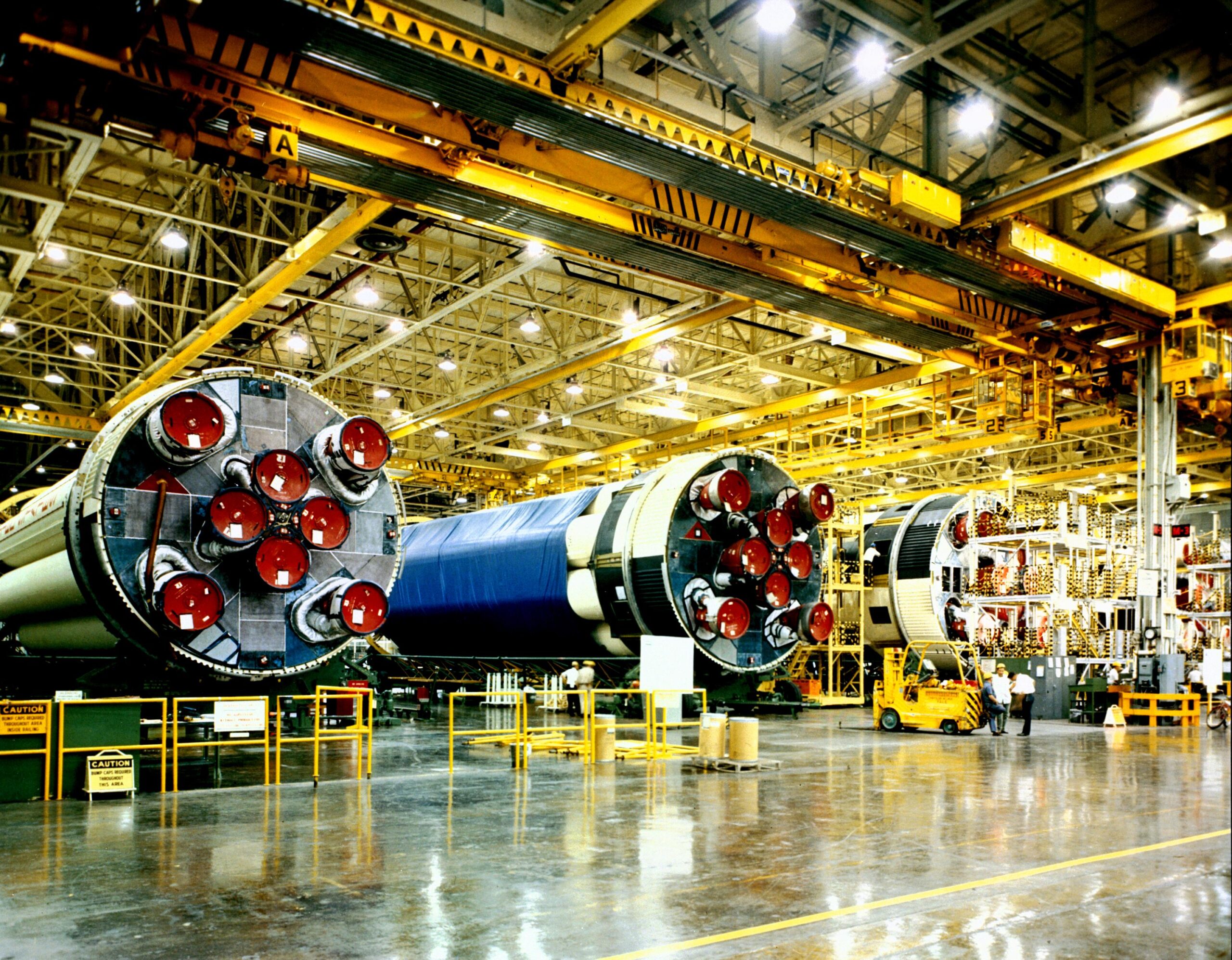
 The McDonnell Douglas Astronautics Company S-IVB stage was built at Huntington Beach, California. The stage was 61 feet, 4.555 inches (18.708497 meters) long, with a maximum diameter of 21 feet, 8.0 inches (6.604 meters). It was powered by a single Rocketdyne J-2 engine, fueled by liquid hydrogen and liquid oxygen. The J-2 produced 229,714 pounds of thrust (1,021.819 kilonewtons), at high thrust, and 198,047 pounds (880.957 kilonewtons) at low thrust). The second stage carried enough fuel for 7 minutes, 49.50 seconds burn at high thrust.
The McDonnell Douglas Astronautics Company S-IVB stage was built at Huntington Beach, California. The stage was 61 feet, 4.555 inches (18.708497 meters) long, with a maximum diameter of 21 feet, 8.0 inches (6.604 meters). It was powered by a single Rocketdyne J-2 engine, fueled by liquid hydrogen and liquid oxygen. The J-2 produced 229,714 pounds of thrust (1,021.819 kilonewtons), at high thrust, and 198,047 pounds (880.957 kilonewtons) at low thrust). The second stage carried enough fuel for 7 minutes, 49.50 seconds burn at high thrust.
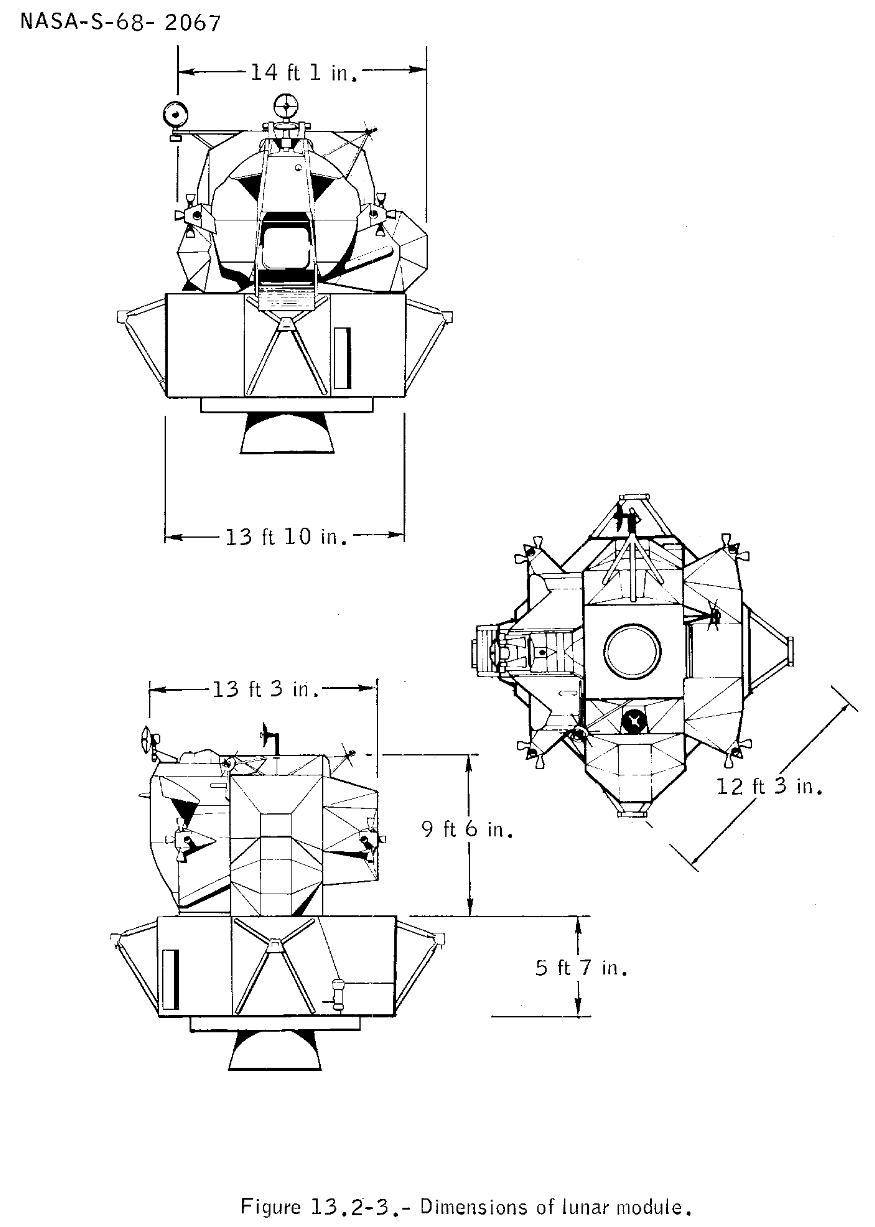
 The Lunar Module was a two-stage vehicle designed to transport two astronauts from Lunar Orbit to the surface of the Moon, provide shelter and a base of operations while on the Moon, and then return the astronauts to lunar orbit, rendezvousing with the Apollo Command and Service Module. It was designed and built by the Grumman Aerospace Corporation at Bethpage, Long Island, New York.
The Lunar Module was a two-stage vehicle designed to transport two astronauts from Lunar Orbit to the surface of the Moon, provide shelter and a base of operations while on the Moon, and then return the astronauts to lunar orbit, rendezvousing with the Apollo Command and Service Module. It was designed and built by the Grumman Aerospace Corporation at Bethpage, Long Island, New York.
The Descent Stage incorporated extendable landing gear, a hypergolic-fueled rocket engine to brake from orbital speed, establish a landing trajectory, and then decelerate for landing. The TRW Space Technology Laboratories Lunar Module Descent Engine (LMDE) produced a maximum of 10,500 pounds of thrust (46.706 kilonewtons), and could be throttled from 10–100% thrust. The stage also carried support equipment, oxygen, water, etc., needed by the astronauts, and equipment for use during surface activities.
To return to Lunar Orbit, the Descent Stage was left behind, and the Bell Aerosystems Lunar Module Ascent Engine (LMAE) was fired. This engine also used hypergolic fuel and produced 3,500 pounds of thrust (15.569 kilonewtons).
LM-1 weighed 36,342 pounds (16,484 kilograms).
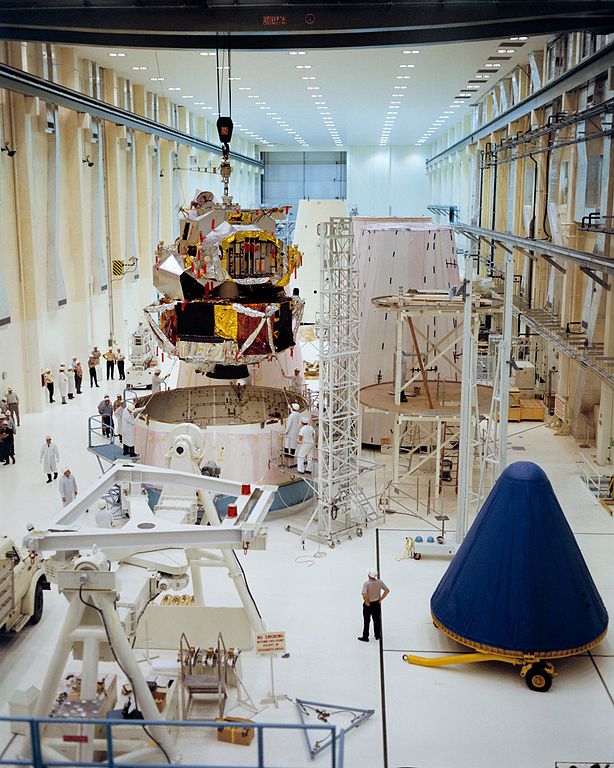
¹ The Apollo Program Saturn rockets were designated as both AS-xxx and SA-xxx. The AS-xxx designation was applied to the complete vehicle, or “full stack,” while the SA-xxx designation applied to only the multi-stage rocket assembly.
© 2019, Bryan R. Swopes
